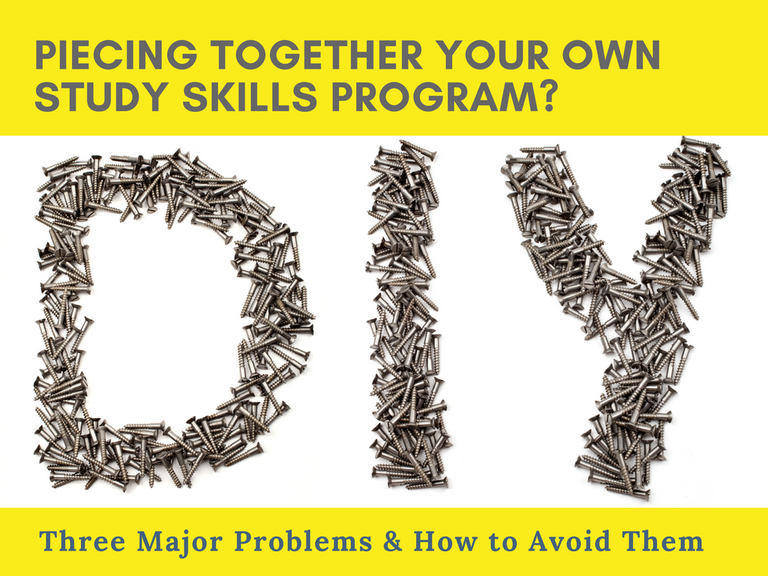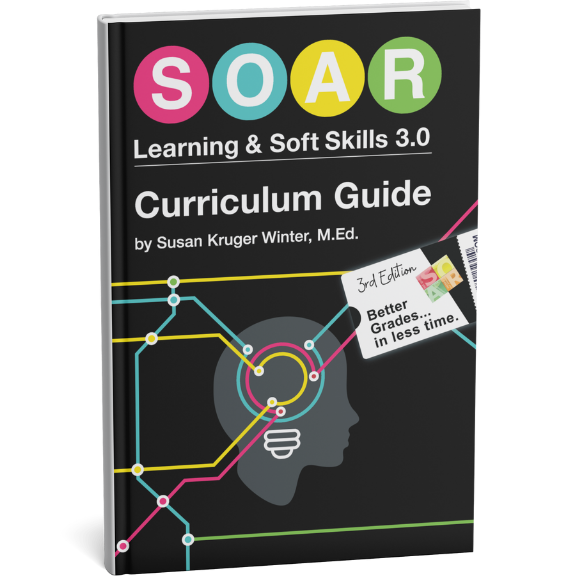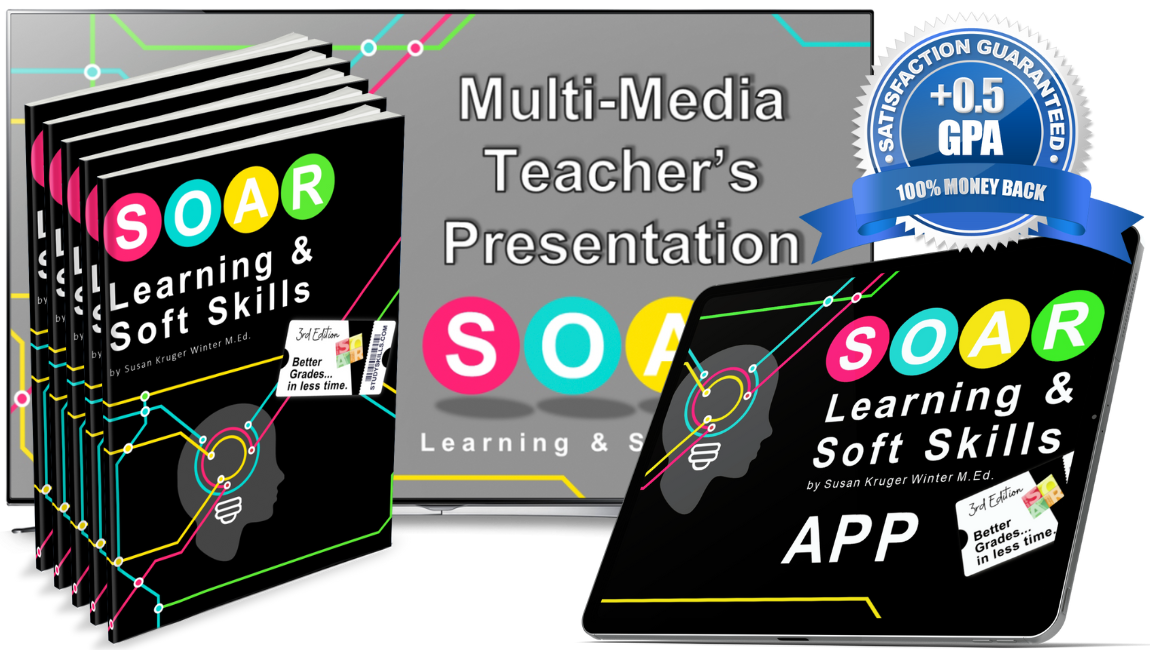The Challenges of “D-I-Y” Study Skills Programs
Trying to Piece Your Own Study Skills Program Together?
I’ve been talking to a LOT of educators in the past few months. That’s normal for this time of year.
However, something is different this year. I’m hearing something I’ve heard a lot over the past 20 years, but more “once in a while.” This year, it has come up in literally over half of my conversations.
It goes something like this…
“We had a study skills program for a while, but it died out. We didn’t have a unifying curriculum; we pieced it together ourselves, but it didn’t stick. So, now… we are looking to make something more permanent.”
Ah, yes. I get it. And, the need for assembling your own curriculum is usually driven by budget.
But, there are three major reasons why assembling a D-I-Y study skills program typically doesn’t have staying power:
- Strategies are not aligned to the brain, making them inefficient and laborious. (And, nobody wants “laborious.”)
- Students don’t know when to use strategies.
- The school lacks a language to describe –and therefore to support—the strategies and initiatives.
If you are about to start the school-year with a D-I-Y study skills program, be sure you address these common problems…
Problem #1: Strategies Don’t Align to the Brain
Inefficiency is the greatest roadblock to long-term success with a study skills program. I just searched “study skills” (in quotes) on Google: 22.33 MILLION results!
But, nearly every item you will find over-complicates the learning and organization process, rather than simplifying it. For something to work, it must work without friction. This is just as true for adults as it is for students. It’s human nature to seek the shortest path between two points. So, we can’t expect an entire student-body to be successful with heavy, labor-intensive strategies.
However, if we work with the way the brain is naturally designed to operate and learn, we make strategies far more accessible! Students can’t help but be more successful when they are shown the paths for simplifying the process.
To help you and your students better understand how the brain works, we produced several videos on The Brain Biology of Learning. Each video is 1-3 minutes long, and provides valuable insights for teachers, students, and parents to help everyone better understand how their brains work. The videos can be used alone, or with the SOAR curriculum and include the following titles:
- The Brain Circuit: How the Brain Works
- The Learning Circuit: How Learning Works
- The ADHD Circuit: How ADHD Works
- The Autism Circuit: How Learning Works
- The Learning Disabilities Circuit: How Learning Disabilities Work
- The Motivation Circuit: How Motivation Works
Problem #2: Students Don’t Know WHEN to Use Strategies
Another big problem with the 22.33 million resources for “study skills” is that students usually don’t know when to use specific strategies. This is either because we’ve overloaded students with too many strategies, or because the vast majority of common “study skills” are actually “teacher-directed” strategies, not “student-directed” skills.
The purpose of “study skills” should be to foster students’ independence with learning. So, we can’t overload students with too many skills; they’ll forget how to do them and be confused about when to use them.
We also need to get very clear on what skills are “teacher-directed” versus “student-directed.” The best example of this is the strategy of using graphic organizers. As a teacher, I LOVE graphic organizers! The right graphic organizer makes any text more interesting and understandable.
BUT, students cannot pick out “the right” graphic organizer. If they knew the material well enough to select the correct graphic organizer, they wouldn’t need it in the first place! This means using graphic organizers is an “instructional strategy,” but not a “study skill.”
So, the solution to helping students know when to use strategies is to streamline down to a few, highly effective strategies that are student-directed and apply across content areas.
Problem #3: No Unifying Language
When educators tell me that their previous attempts to implement a study skills program “didn’t stick,” what they are saying is that the school culture did not absorb them. For the school culture to absorb them, they need to be able to talk about them; they need a “language for success.”
Sure, most teachers are more than capable of developing a common language out of a group of strategies. But, the bottleneck is that there is simply not enough time!
Here’s a glimpse at the language that helps SOAR stick: https://studyskills.com/about-us/soar-lingo/.
If you’d rather start the school year with a program that has worked out all of these kinks (and perfected them over 20 years), get more information about the SOAR Curriculum, or request a quote. Our team of curriculum consultants (who do NOT work on commission) are happy to answer your questions and get you started quickly and easily!
To our students’ success,
Susan Kruger Winter, M.Ed.
SOAR Author & Developer
Six Steps
Conquer the Chaos
Get Our Free Guide & Information on...

"*" indicates required fields
Get Our FREE Curriculum Guide!
The SOAR® Curriculum
The most critical learning, organizing, and communication skills needed for school. Learn more here.
Who’s Using SOAR®?
SOAR® Guarantee
Click here to learn more.






